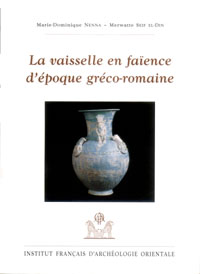|
|
 |
|
|
The
collection of Graeco-Roman faience held within the Graeco-Roman Museum of
Alexandria is one of the richest in the world. This ware, so seductive in
its varied colour and glazing, its rich repertory of forms and iconography,
had never yet been the object of collective study. Plunging into the corpus
of some 1800 objects (one third from the Graeco-Roman Museum, the remaining
two from the great collections, published or otherwise, held in Egypt, Europe
and the United States), the authors lay forth the knowledge of manufacturing
techniques, the workshops, distribution and datation of this ware in all
its forms and decoration. Particular attention is brought to bear on the
connections faience ware had with contemporary production realised in other
materials in an attempt to better define the typological and decorative
repertoire in use within Ptolemaic and imperial Egypt. |
|
